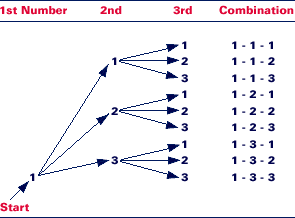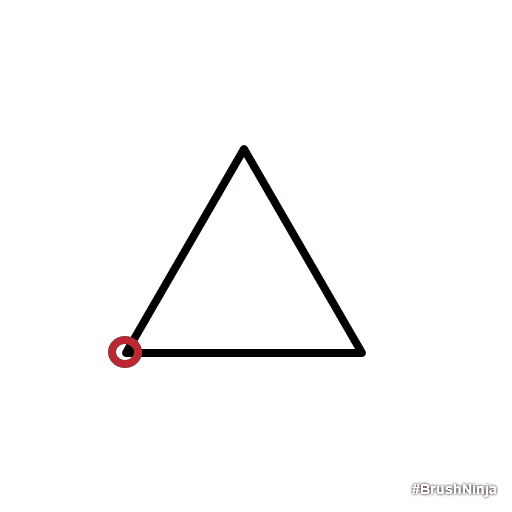Building Blocks
Things are made of things which are made of things...
The world is fractal in nature.
There’s a man in the mirror in the mirror with the man, which also has a man in the mirror in the mirror with the man, which also has a man in the mirror with the mirror with the man…
Mirror = Man + Mirror
Therefore, Mirror = Man + (Man + Mirror)
As well as, Mirror = Man + (Man + (Man + Mirror) )
etc…
In other words, within every thing is a “mirror” of itself; a copy of the macro in the micro. You need only the proper device with which to see it. This applies physically, conceptually, and spiritually.
Now, what do I mean by that?
Well, I mean it in that the Physical world is also a world unto itself, also composite of its own minor/child versions of the three — physical, conceptual, and spiritual. Then, these minor worlds also are composite of their own sub-physical, sub-conceptual, and sub-spiritual worlds.
With the physical, spiritual, and conceptual one could create a combination tree, as such:
Physical Major → Physical Minor → Sub-Physical.
Spiritual Major → Spiritual Minor → Sub-Spiritual.
Conceptual Major → Conceptual Minor → Sub-Conceptual.
Or mix it up:
Physical Major → Spiritual Minor → Sub-Conceptual.
The semantics don’t really matter. These are just my chosen terms. One could also change out conceptual with “mind” but that has grown divergent meaning, so let’s stick to “conceptual.”
Now, let’s take a real-world example:
Water.
Water is wet. It can saturate. It moves with a fluidity, a liquidity. It can freeze, or it can boil. It can be as a vapor, and it can condensate.
These are its predominant physical attributes.
Likewise, we can also discern its conceptual and spiritual attributes.
What does it mean for a person to have “fluidity”? One might say it is the opposite of stubbornness, or perhaps it means that it has no definite form or boundaries to itself. When we personify the physical, then conceptualize the applications of the universal “thing” we call “Water”, we arrive at a more deep understanding that encourages metaphor.
Without this conceptualization, one might not be able to arrive at arts such a poetry or verse. A language without such embellishments is woefully literal, and often finds itself failing to be able to quickly describe lofty concepts in a reasonable timeframe. In other words, these expressions have utility. Without the ability to form metaphor, we must agonize over the creation of new words when phrases could suffice. We call these forms “Idiomatic Expressions.”
What does it mean to be a “wet blanket”?
In the literal sense, it means taking a blanket, soaking it with water, and then tossing it on a fire to smother it. Or, perhaps, it’s when one attempts to rest for the night only to find their blanket is damp, thereby sapping them of heat rather than fulfilling the original purpose of a blanket, which is to provide warmth. Both scenarios lend to the meaning of the phrase. Both are alliterative interpretations of a phrase which transports the reader/writer to a place that only those with the personal experience can understand. When that is dependent on community, culture, region, or time period, we often refer to these as “Colloquialisms.”
Regardless, once a pair of speakers come to the unanimous colloquial understanding, that a “wet blanket” is someone who interrupts an event by depleting it of joy, it is far easier to say “wet blanket” than the longer, more literal descriptors. Alternatives might also exist, like “party pooper” or “Debby downer.”
Lacking a word to itself, pre-existing words are used as “building blocks” to arrive at the ultimate meaning of a multi-faceted concept. Some assembly is required, but it’s far easier to ship a desk in parts and have the end-user assemble them than it would be to ship the whole, constructed desk in one piece.
So, too, do we do the same with things such as Water. We conceptualize the thing, based on its properties and attributes, and describe them with a loftier idea that Water has its own personification — which we call its “Nature.”
The Nature of Water is to be wet. To leak. To freeze when cold, and boil when hot. It can be used to clean, and as a storage device for potential energy. Put water in bucket and drill a hole in that bucket. Now a stream flows from the bucket. How can you harvest that energy? The energy you use to fill the bucket and hoist it up is now being released at a slower rate than the explosive energy needed to fill it.
If slowed to a calibrated rate of flow, one could ostensibly make a clock, the most simplest form can be seen below:
This is the elaborated concept of the thing we know as Water.
That tingle you feel when you look at the end product, and imagine what other applications it can be used for; that tingle you feel in the pleasantry and novelty of seeing something express itself by action — well, that’s the Spiritual element of the thing. That is Spiritual Water.
The Physical informs the Conceptual which expresses itself in the mind as the Spiritual. Only by experience and “gnosis” or “enlightenment” might one come to the Spiritual understanding. You cannot simply inject another person with the Spiritual meaning — it must be experienced firsthand.
By harnessing a thing’s nature and pairing it with the nature of another thing, we have conceptualized a new thing, a novelty, which does not readily exist in nature. Parts form a sum, a composition. Aside from the occasional tipping of leaves as they accumulate water, the exact configuration of the bamboo and water device is not something the world can intentionally form without the aid of a Human element to construct it.
All there is left to do is name the thing that is now known to us. Shishi-odoshi, in the case of a bamboo clacker. It’s general use is as a means to scare off unwanted animals by having an occasional noise spook them away.
Yet, has it always existed in the conceptual realm. The inventor merely unshackled it from the “void” of infinite possibilities.
In other words, while it can occur coincidentally, the Human element makes it intentional. Naming any thing is a formal acknowledgement of it. Water has ALWAYS had this property, this capability, on a conceptual level. This property precedes even the physical realm. As soon as hydrogen and oxygen were birthed into creation, the possibility for such a device to come about was also birthed with them.
Once the act is revealed to us, once we can see the Water move as it is wont to do, then might we harness the Spiritual element from it by means of Conceptual refinement of what already is and has always been.
Ultimately, however, it requires life to develop upon such building blocks to construct something which is a things unto itself. It takes a collaborative discernment and introspection to arrive that Spiritual nature of the Physical and Conceptual components.
It is for this reason one might claim that there are no inventions, only discoveries. A pulling of things out from the void and giving them their time to be known. All possible configurations of all things, all combinations of all parts, are conceptually possible. One need only iterate through all the possible combinations to obtain all which is possible.
And, so you see again, the fractal nature of the world.
Things are a combination of their parts. A sum of parts. Parts given to us by the Creator.
One need not form this conceptual diagram to acknowledge what is or isn’t possible. You need only arrive at one instance of the combinant to prove that others are, indeed, possible. A prototype, or sample. It is our own Choice and Free Will which determines which variation we will put to use and which will be discarded for another time and purpose.
This is what separates Invention from Innovation. Any one of those combinations of numbers is the Invention, the proof that such a thing is possible and stable. Innovation is the re-application of the methodology with the intent of arriving at an ever-so-slightly different outcome. Yet, they are all recognizable as having stemmed from the same Source.
A careful mind will notice that there is an inevitable, inescapable Origin. Something which is not a part, but the total sum of all parts. By necessity, such a thing must exist.
This is the Conceptual God. The Father. The Law. For every concept there is one which has conceived of it. Who then do we call the one who conceived of the concept itself?
The unchanging, unwavering, force which precedes all others. The Total Sum, which has nothing outside itself with which to compare. Both the whole and the one, the family and the individual. The first unit, upon which all other measurements are based in order to form the Universal Ruler.
In order to measure, in order to compare things, one must first submit oneself to a standard system of measuring. You need to define the One, the Unit. Only then can you build with purpose.
A steady pulsation of energy which teases all other things into existence. This is the One. It is also the All, for all things are derived within and without, according to its constancy.
However, don’t simply assume that all material things, every atom in the Universe brought together is the end and all of it. Do not neglect both the Conceptual and Spiritual elements.
Trinitarian Necessity
Why is it in threes?
Why not just a Physical and Conceptual; a body and mind?
Why include this Spiritual element?
Because without it things cannot be cyclical.
Without a third side, a triangle, we are left with a single line. Two points, A and B. Sure, you could bounce between them, but it is still bound by the Start and Stop. It is not cyclical. It is not Immortal. It doesn’t repeat in a single direction, but must halt, turn back, and then proceed again.
Basically, a duality has finite ends, and finite beginnings.
A cycle does not.
A triangle represents the most simple way one could possibly form a cycle, and is the most basic form of a “circle.”
This property is essential for Time to form. For there to be the possibility for an endless, beginning-less repeat.
Where does it start? Where does it end?
None can say, but the One whom created it. The Creator of the All.
The One who set the Rule, who set the Unit. The One who says how fast the ball traces the path. The One who says that it will continue, and not stop.
The One who answers the Why.
It can only be so upon the simplest of forms. The Triangle.
Look closely upon the animation. There are three sides, yet there is another Three.
There is the black Triangle, which is unmoving. There is the red Ball, which is moving. Then, there is the Movement itself. It’s not just the Ball and the Triangle. There is a Movement between them, which makes their properties known — which reveals their Nature. The Triangle is the rule, which the Ball cannot deviate from. There is the Ball, which is an instance of the Triangle, a point upon the Triangle which is only but a portion of the Triangle’s whole influence.
Then there is the Movement. It is purely ethereal, having no form, no color, and no identity unto itself. It cannot be seen without the Triangle holding firm and the Ball setting upon its course. It cannot be measured without first measuring the other two and their relationship to one another. Movement requires time. One must experience it by their own perception, and so a mere description cannot do it justice.
The Triangle is the Father. He sets the rule and puts us all upon a path. He holds firm, unwavering, and unchanging no matter the cycle.
The Ball is the Incarnation. Only one shall follow the path without even the slightest of deviation. Should another do so as well, they shall be indistinguishable from one another, and therefore are one and the same.
The Movement is the Spirit, which is only revealed by one’s own Discernment. Perception, Conceptualization, and Acknowledgement are all necessary to Define it as an essential part of the whole. You cannot come to understand the nature of the Father but through the Movement of the Ball. Only by its trajectory might the nature of the Father be revealed.
This concept predates Jesus. This concept is the Christos, the Mark of the One. The One made Flesh. The Fractal Proof given unto itself.
The World within the World…
Within the World…
Movement defined. By experience.
The All’s Ascension and Descension through the Fractal Macrocosm and Microcosm, of its own volition.
To Be Known
For something to be known, to be given a name, it must be known by Three.
Body, Mind, and Soul.
These are extensions of one’s Person.
Person = Body + Mind + Soul.
This instance, in order to be known as separate from another, is given a name. We are all “one of a kind” and that kind is the sum of the Three. Only Man has the introspective qualities necessary to define the Soul in the physical world; only Man has the Movement, the Spirit of Will, needed in order to differentiate itself from any other physical thing.
HOW you act, WHAT you do — these are just as important to defining you as your Body and Mind. Your Legacy is just as imperative to your existence as existing alone. You have a Body, which occupies a Time and a Space, and is therefore adherent to them. You have a Mind, which is beholden to your situation. You cannot produce thoughts which do not first have an impulse. We are reactive creatures, who learn from those reactions. We then seek proactive measures in anticipation of those events occurring once more. We learn. We form behaviors and habits. We internalize patterns to inform our actions.
The Choice to act, however, is solely within the Spirit. We cannot know what we do not know, what we have not learned. Only by the Spirit can we come to do things outside the vectors with which we have formed our behaviors. Only by DOING or NOT DOING are we made known to the World completely.
Only by given an opportunity, an experience, can we make a choice…
Things are given names by what they do. When an Instance of Man is given a name by their acts and not just by their existence, we call these Titles.
Titles bear Authority, which is none other than the Spirit fulfilling the Will of the Father.
These functions predate their namesake; they existed before we named them. Within the Mind of God.
As Building Blocks.
We make bricks. Bricks make buildings. Buildings make cities.
Each brick, building, and city all share in a similar Nature. Modularity. Stackability.
They all share a Physical, Conceptual, and Spiritual kinship with one another, though they be fractions, fractals, of one another. So in the large, shall it be in the small. A stack of bricks built too tall will topple over, just as would a city if built too large.
By studying the small, we might come to know the large as well. Not just the physical limitations of a thing, but also their conceptual and spiritual limitations.
Comms devices, symbolism, idioms, metaphor, parable…
These things are used to record and catalogue the experiences of others that we might not forget the Natures of things. We give things names, apply exaggerated ideas to them, in order that the lessons only learned by experience alone might be preserved.
When all these lessons are joined together into a single tome, we call it a Bible.
Therein lies the truth, but its Source predates the paper it was written upon, as well as the experiences recorded within. All these lessons existed before they were coaxed from the pen. They existed in God. All else are conduits to tease from Creation His Will; the Father’s Will; the Will of the Trinitarian as the first and most simple “Building Block” that can be.









Your mind is wonderful.